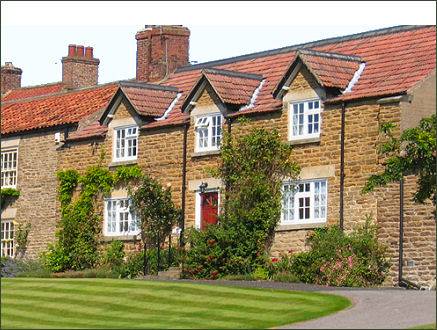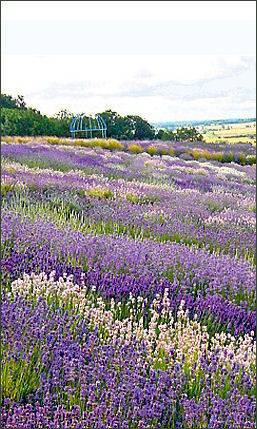Terrington
OS grid reference:- SE 672 706
 Terrington is a large and pretty North Yorkshire village. It is situated in the scenic Howardian Hills and lies 4 miles to the west (6.4 km) west of the popular market town of Malton.
Terrington is a large and pretty North Yorkshire village. It is situated in the scenic Howardian Hills and lies 4 miles to the west (6.4 km) west of the popular market town of Malton.
The village name derives from the Anglo-Saxon language, otherwise known as Old English, but is of uncertain meaning. It has been suggested that it comes from the word Tiefrung, meaning a picture, and may be linked to an older history of a Roman villa and mosaic floors. Another is the Anglo-Saxon name for witchcraft. It could also be formed of a combination of the Anglo-Saxon personal name, Teofer, and tun, meaning Teofers farm
 A historic settlement, Terrington is referred to in the Domesday Book of 1086 as Teurintone. At that time the lands were divided between the manors of Bulmer and Foston. At the time of the time of Norman conquest , the estates were held by Ligulf, Northmann, Earl Morcar, Earl Waltheof and Gamal, son of Karli.
A historic settlement, Terrington is referred to in the Domesday Book of 1086 as Teurintone. At that time the lands were divided between the manors of Bulmer and Foston. At the time of the time of Norman conquest , the estates were held by Ligulf, Northmann, Earl Morcar, Earl Waltheof and Gamal, son of Karli.
Following the conquest the lands at Terrington were granted to Robert, Count of Mortain, half-brother of King William the Conqueror, Count Alan of Brittany, a relative of the king and one of the richest and most powerful men of England and Berengar of Tosny, a Norman lord who accompanied William to England..
The manor passed to Niel Fossard and then followed the descent of the manor of nearby village of Sheriff Hutton. Other lands were tenanted in the thirteenth century by the Latimer family and followed the descent of his manor at Danby until the sixteenth century. In 1752. it was sold to Henry Howard, 4th Earl of Carlisle.
The village church of All Saints (pictured right) has some Saxon remnants and is a Grade I listed building. A church has occupied the site since the seventh or eighth century. The carved triangular stone, which stands atop the narrow window high up on the south wall of the nave is actually a a recycled gravestone which was old enough to be disused when the herringbone wall of a Saxon Church was built. From the Saxon Church, the North Aisle was built out by the Normans in the twelfth Century. The octagonal font dates to the fifteenth century.
A Chantry Chapel was added to the south side of the building in the fourteenth century . Following the religious reforms which took place during the reign of King Henry VIII the Chapel began to fall into ruin. The present South Aisle and Porch were added in 1868. The south window is of early twentieth Century 'Arts and Crafts' glass painting by the William Morris Company following the design of Edward Burne-Jones.
A Wesleyan chapel was constructed in the village in 1816 and a Primitive Methodist chapel was built in 1867. The latter is now the music room of the Preparatory School.Terrington also has a village hall, shop and cafe, a mobile post office.
The popular Yorkshire Lavender atraction at Terrington, is recognised as the area's leading, friendly and welcoming free attraction. The award-winning gardens are a mixture of different styles including a Lavender Spiral, Mediterranean Garden, Sensory Garden and a Wildflower Meadow. In summer, the lavender with its stunning array of different colours, from white through a complete range of blues and lilacs to magnificent deep purples, along with the range of distinct and heady scents, is a wonderful experience.
